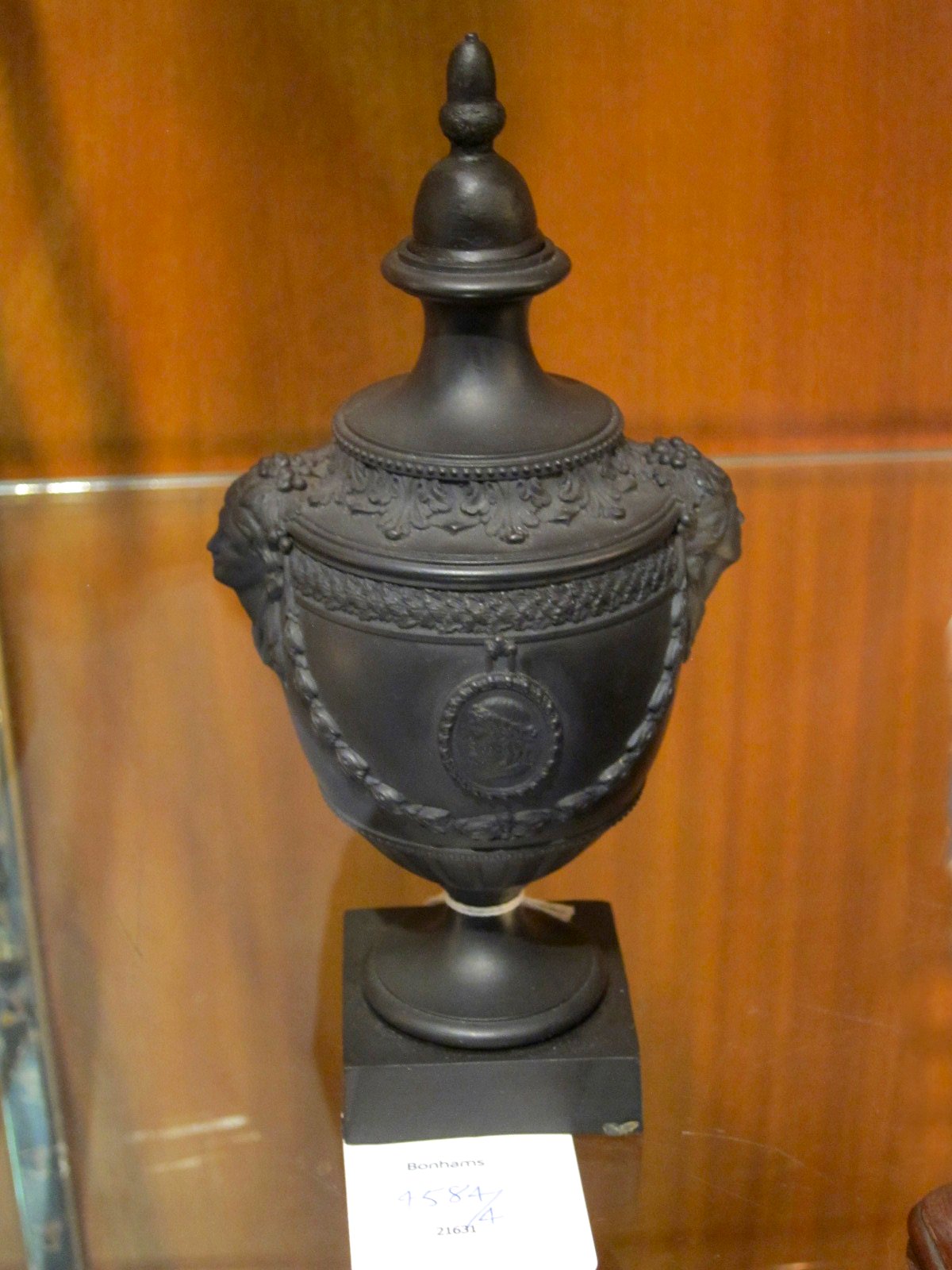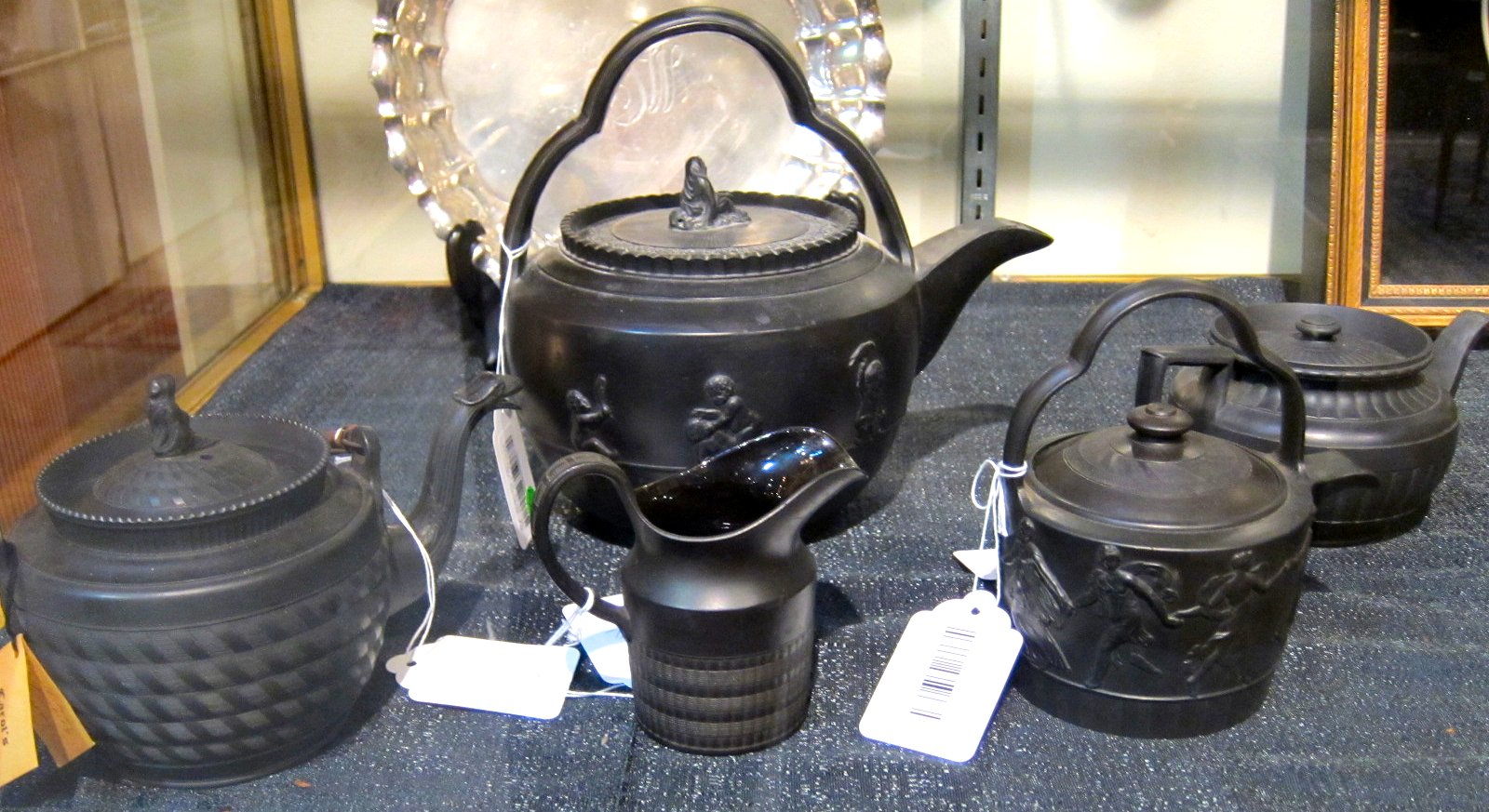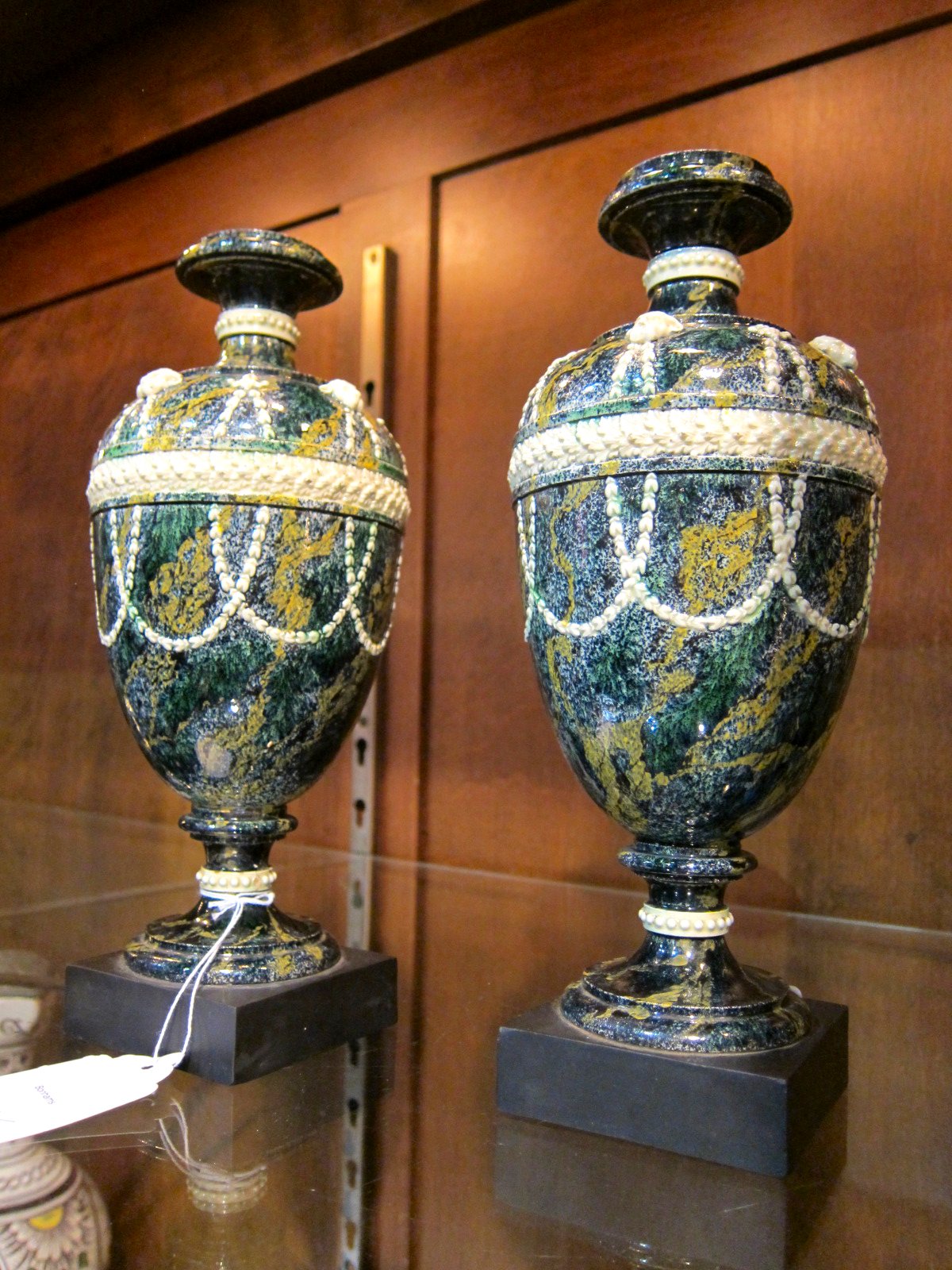The bough (or cache) pot of my dreams: A John Turner black basalt pot with lid (circa 1780 to 1806), as seen in an article written by the ceramics expert Mrs. Willoughby Hodgson, author of How To Identify Old China
As I left off in in my previous post, which can be read
here, I could hardly stand the wait until the commencement of the auction the following day. The small distraction of having my daughter's friend stay the night helped pass the time a little more swiftly, as I was charged with whipping up a Sunday breakfast to impress two ravenously hungry young ladies. Freshly baked popovers with lashings of creamy butter and a dollop of raspberry jam, scrambled eggs, ripe strawberries and, as if I needed the stimulating effects of caffeine, a personal pot of strong coffee to fortify me through the lunch hour.
The auction is to begin at 10 a.m. sharp, and as the lot I am interested in will not come under the hammer until later in the day, we leave the house in the early afternoon to make our way to the sale. Upon arrival, plenty of time remains to register at the desk, collect our paddle, and watch as several lots sell. My husband and I take the opportunity to assess the collection of ceramics on offer in the event I have missed anything of interest from the prior day in my excitement. There are certainly some tempting pieces; the urn shaped vases and incense burner speak to me in particular. If we are to hold hope for a successful bid on our lot of interest, we will have to remain focused on the prize and keep our powder dry.
I'm sure by now you are wondering what exactly it is that has tingled my spine and induced me into such an excitable state. I should note that although my holy grail of the basalt world is not something which would necessarily appeal to everyone, for me the piece encompasses both my passion for flowers as well as for containers to arrange them. I am drawn to the severe urn-like form of this piece (I have a "thing" for urns), its neoclassical cartouche decorations, its plinth, ball and paw feet, as well as to the item's intended purpose. In fact, it is something I have long coveted since it arrived at my notice, by way of an old photograph, contained within a book on ceramics (illustrated above). I have never seen one of these pieces in the flesh prior to my nail biting day at auction.
So, here I am, with not just one of these long sought after items, but two. Yes, TWO, and they are both offered within the same lot. Can the necessary variables withstand such luck, namely my husband, my nerves, and my bank account?
The lot that led to my undoing
Photo: Chronica Domus
For many years, I have hoped to stumble across one of these illusive beauties, and introduce it to my little collection of black basalt. Outside of the pair photographed above, I have never actually seen one for sale. While researching this piece, I discovered such a pair had sold at auction in London many years prior, but were notably missing their perforated lids. In this instance both the pyramidal surmounted lids are included and intact. There is not a chip, scratch or repair between the four pieces. They are perfect in every possible way, and I want them!
These bough pots (or cache pots as they are sometimes called), were made by John Turner, the master potter, friend and rival of Josiah Wedgwood, sometime between 1780 and 1806. Interestingly, many of Turner's designs unabashedly reflected the influence of Wedgwood. Look at the following photograph I found in my copy of the auction catalog from the Milton Milestone Wedgwood sales held in New York in 1975 and 1976. Clearly, the Wedgwood pots and the Turner pots could have been made by the same hand. Don't you agree?
A pair of Wedgwood bough pots in the collection of Milton Milestone that was sold at Sotheby's on April 6, 1976 in New York
Photograph: Chronica Domus
As the ceramic lots begin arriving on the block, the auction room is about half full. I have speculated in the run up as to who, if anyone, should be my rival when pursuing my quarry. My husband and I are seated toward the middle of the room which places the majority of bidders behind us. We really cannot get a good grasp on the competition. After much dithering, we decide to move towards the back of the room which, to our way of thinking, affords a better vantage point on the proceedings.
The black basalt tea ware lots are selling fast, one after the other. Most sell within the estimated range, which I take as strong indication that I may be in with a chance when it comes my turn to bid. The bough pots are rapidly approaching and I can feel my heart pounding harder and harder.
I've been in this room many times prior to today and have often been the successful bidder on items that are now resting proudly in my home. However, on this occasion, seeing the interest intensify as my lot approaches the auction block, wracked with nerves I turn to jelly. I am suddenly a feeble wobbly mess and stand little chance of surviving the battle ahead. There is only one thing to do. I turn the paddle over to my trusty husband, my rock, and take my chances. And, what a good job he did! The two bidders in the room, one a dealer who had already successfully won many items of furniture and decoration, the other a collector, have rapidly run up the price. Then, out of the blue, a live internet bidder chimes in to raise the heat. My husband is next. I can barely look as the auctioneer announces "we have a new bidder in the back". It is now a war between the internet bidder and us. After several bidding rounds, my husband looks at me and says "should I?", meaning shall we bid to win. "Yes do", I nervously mutter, trepidation etched on my face, barely getting the words out of my parched mouth, and praying this will not lead to ruin as the pace and price escalate in tandem. I begin to breathe again just in time to see the auctioneer motion towards my husband to show her his paddle. Victory! We've won! I can barely comprehend it. I need to sit down and compose myself. I really should have packed my smelling salts as I have transformed into a complete nervous Nellie. Although I am not a serious collector of ceramics, at least by most people's definition, I feel as though we were pitted against a few of them at this auction.

Our bough pots looking pretty with their spring blooms
Photo: Chronica Domus
I am ecstatic that we are now the proud stewards of these two beautiful vessels that will be very well appreciated and used for their intended purpose. In fact, just this morning, I raced out of the house to purchase some spring blooms at the farmers' market. It was so much fun to arrange the flowers within the pyramidal lids. Each has a dozen holes, three per side, and act much like a flower frog. When not in use, they shall have pride of place on one of our side tables or atop the mantel. I cannot help but wonder where the veiled caryatids at each of the four corners of the pots have lived in their two hundred years of existence, how they've traveled across the seas from England and their humble beginnings in Staffordshire, and how their prior owners used and displayed them. This evening, these two beauties will grace our dining table, where they shall punctuate our lily white tablecloth with their dark and stately presence. Admittedly, these were a bit of a splurge for us, but the color has finally been restored to my husband's face and all is well as I await the next great find.
























